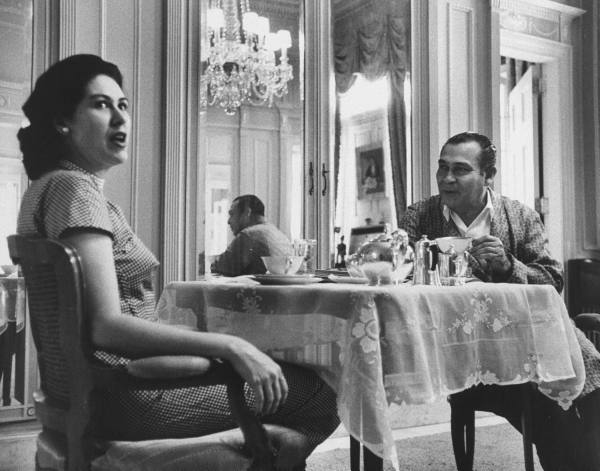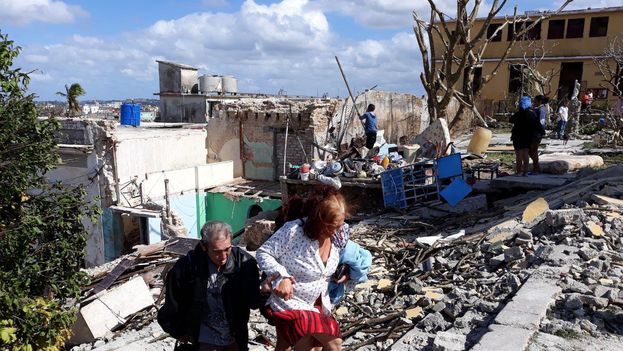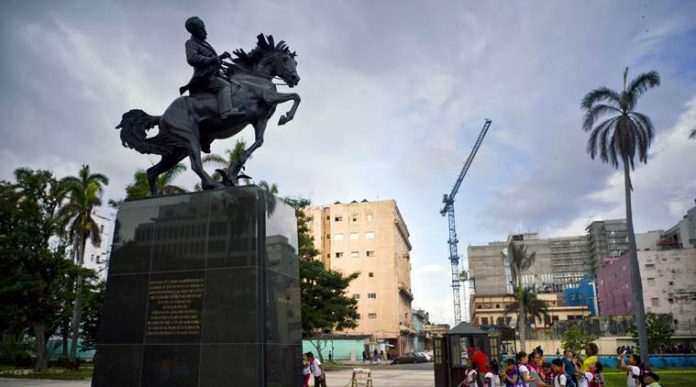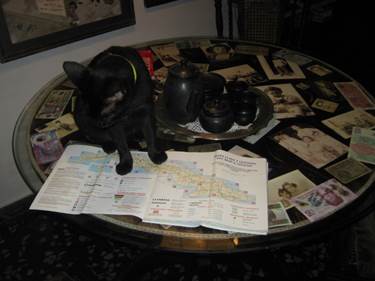
Fernando Dámaso, 15 April 2019 — Dr. Ramón Grau San Martín was the seventh President of the Republic. He governed from 10 October 1944 to 10 October 1948. During the very month he took office, a fierce hurricane struck the Island, causing great destruction. For many citizens, this natural phenomenon constituted an important omen: the Grau government was kicking off with stormy winds — and a stormy government it would be, despite being established amidst the prosperity produced by World War II, when sugar came to achieve a high price on the world market.
Grau, who promised to achieve a “government of Cubanness,” and who liked to say, “Cubanness is love” — and that, besides, in his administration, women were “in charge” — promulgated the Law of the Sugar Differential to benefit the industry’s workers, fixing the producers’ share of the final molasses (a statute of indisputable social utility).
He also launched a vast Public Works Plan that notably improved many neighborhoods in the city of Havana — despite some projects being so poorly constructed that they eventually had to be demolished and rebuilt. He established the compulsory licensure of degreed and non-degreed professions, a summer schedule for businesses, a lawyers’ pension, and retirement funds for workers in the textile, sisal and tobacco industries, among others. continue reading
From the start of his administration, Grau tried to associate it with the “hundred days” (9/10/1933-1/15/1934) and lend it continuity via social measures — although many contained a high dosage of demagoguery, so much that he became popularly known as “the Divine Gallimaufry.”
At the same time, in a moment of weakness, he allowed certain armed groups (remnants of the 1933 Revolution’s action groups who had been unable to insert themselves normally in the subsequent political process, and who practiced violence and carried out shady dealings) to roam the streets, primarily, of Havana.
This infinite tolerance for gangsterism revived the anarchic episodes of that prior period — which, during the previous administration, had seemed a thing of the past — thereby demonstrating the terrible current state of relations between the Executive and Legislative powers, which had suffered a great decline.
Grau abandoned the semi-parliamentarism instituted by the previous adminisration and went back to a presidentialist style of government, ignoring what had been established by the Constitution of the Republic in this regard.
In addition, his presidency was characterized by some picturesque, even extravagant, successes that reduced his credibility and respectability — such as the strange disappearence of the diamond embedded in the floor of the Capitol (which, some time later, one fine day, with no coherent explanation, appeared on the table in his office, and which he nonchalantly returned to its rightful place as if nothing had happened, without revealing who had masterminded such a misdeed).
Among the tragic events occurring in those years, one that merits pointing out is the so-called “Battle of Orfila,” more like a slaughter, wherein the two most important action groups that operated in the city of Havana vented their personal and business rivalries with bullets, resulting in a great number of dead and injured.
On the international plane, Grau allowed the formation of a clandestine army – the so-called Legion of the Caribbean — which established its base of operations in Cayo Confites and was aimed at overthrowing dictatorships in the region, in frank violation of international laws in force then.
Notwithstanding all these errors, which discredited the government as well as the President himself (turning him into a cartoon-like figure), there was always an absolute respect for civic liberties and freedom of expression — and, as he liked to say, in his government, all Cubans “had five pesos in their pockets.”
Grau was a President subjected to great opposition — not just the traditional kind, but also that of Dr. Eduardo R. Chibás, dissident leader of the Partido Revolucionario Cubano-Auténtico (PRCA), who went on to head it when he was not selected by Grau as the party’s candidate for the upcoming presidential election.
Chibás, a charismatic and populist politician who had directed Grau’s campaign during the so-called “glory days” that had swept him to power in 1944, felt discriminated against, and he became Grau’s most fierce critic and impugner — with and without cause.
On 6 January 1948, general elections were held in which the following candidates participated: for the PRCA, Drs. Carlos Prío Socarrás and Guillermo Alonso Pujol; for the Coalición Socialista Democrática, Drs. Emilio Núñez Portuondo and Gustavo Cuervo Rubio; for the Partido del Pueblo Cubano-Ortodoxo, Drs. Eduardo R. Chibás and Emilio Ochoa; and for the Partido Socialista Popular, Dr. Juan Marinello. The winning ticket was that of the PRCA.
President Ramón Grau San Martín, a popular figure who aroused great hopes in the citizenry (as much for his support of culture as for his performance during the government of the “hundred days” following the overthrow of Gerardo Machado’s dictatorship), who assumed the presidency with a great majority of the population in his favor — little by little, due to his political weaknesses, began to lose prestige and turn into more of a folk character than a head of state.
As a result, even with the prevailing economic boom during his six years of governing and the many constructive works accomplished with the objective of improving our towns and cities, the people did not feel totally satisfied. A monument or bust was never erected in his memory.
Translated by: Alicia Barraqué Ellison













